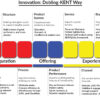
Once a year, 17 September is celebrated by the World Health Organization (WHO) as World Patient Safety Day, a global call upon patients, families, health workers, decision-makers, and healthcare leaders to take action in attention to patient safety. The day is symbolic as it is pragmatic—it is a reminder that safe care is not a luxury, it is a must.
In 2025, “Improving Diagnosis for Patient Safety” will be the theme of the campaign with “Diagnose Better, Stay Safe!” as its slogan. The focus will still be on emphasizing diagnostic precision and promptness because diagnostic error can have calamitous effects, varying anywhere from late treatment to adverse harm that could be prevented. Accurate diagnosis lies at the root of successful therapy, good outcomes, and ultimately, caregiver confidence in patients.
Why Patient Safety Matters
Patient safety is integral to quality care. But too often, the statistics are sobering:
• One in every ten patients globally is injured by unsafe care.
• Errors in diagnosis are responsible for a significant portion of adverse events, leading to increased morbidity, mortality, and costs.
• Research indicates that effective patient activation decreases harm associated with care by 15% at maximum, yielding significant savings and improvements in results.
When patients are involved in decision-making, ask questions, and collaborate with providers, they are less likely to encounter preventable harm. In fact, actively involved patients receive 17% fewer harms than passive patients. Those statistics show a simple fact: patient safety is a team effort.
This year’s theme: Improving diagnosis
The choice of theme for 2025 is particularly timely. Medical practice is grounded in proper diagnosis, and this is one of medicine’s greatest challenges. The WHO calculates that millions of people worldwide each year are misdiagnosed or receive late diagnosis, resulting in conditions being treated inappropriately or being missed.
Common reasons for diagnostic error are:
• Communicational differences between patients and providers.
• Overloaded health systems in which time for in-depth evaluation is short.
• Insufficient use of diagnostic tools or tests.
• Scarce knowledge of unusual conditions.
• Fragmented care systems, wherein patients’ information does not flow readily across providers.
By putting emphasis on diagnosis, this campaign calls for stronger systems, better training, participation by patients, and taking advantage of technology to reduce diagnostic error. After all, correct diagnosis is the foundation of safe, effective, and compassionate care.
Objectives of World Patient Safety Day 2025
The WHO has established clear objectives for this year’s campaign:
- Raise community awareness about the role of patients, families, and caregivers in delivering safe care.
- The key to empowerment is awareness. Patients must be made aware that what they have to say matters and that it is safe to pose questions or seek explanation.
2. Encourage patient and family participation in safety initiatives.
- Engagement goes beyond paper-based feedback. Co-design of safety protocols, participation in hospital committees, and being safety culture partners are included.
3. Appeal for immediate action by health leaders.
- The program aligns with the Global Action Plan on Patient Safety 2021–2030, as it urges all stakeholders to adopt policies and practices that put patient and family participation at every level of care.
4. Encourage inter-system cooperation.
- Improved diagnosis is a team effort—clinicians, nurses, laboratory technicians, patients, and families must work together.
The Human Factor in Diagnostic Safety
Along with numbers and goals, diagnostic safety does also have a very human facet. A delay in diagnosis or a missed diagnosis can end up changing a person’s life. For example, a chest-achingly ill person who is incorrectly diagnosed as having indigestion might end up having a preventable heart attack. A child’s cough that is blamed on allergies could turn out to be asthma or tuberculosis.
Each of these cases is both a clinical failure and a failure of communication and collaboration. Teaching patients to speak up about symptoms, advocating second opinions, and building non-punitive cultures in which caregivers can report near-misses are key steps in a direction of safer systems.
Technology and Innovation: Tools for Better Diagnosis
The computer revolution holds out hope of diminishing diagnostic error:
• Artificial Intelligence (AI) and Machine Learning are being used to detect patterns in imaging, in analysis of pathology slides, and in patients’ data, reducing oversight and improving early diagnosis.
• With telemedicine, patients in remote areas can access specialists, bridging location-induced diagnostic gaps.
•Web-based Electronic Health Records (EHRs) also ensure longitudinal continuity of care, reducing risks of fragmented medical histories.
•Clinical decision support systems may also alert physicians to opportunities that might be missed.
But technology should aid, not replace, human involvement. Patient participation, empathy, and collaborative decision-making remain at the forefront of safe diagnosis.
Creating a Culture of Safety
Improving diagnosis is a long-term-process rather than a one-day-process in order to embed safety in healthcare culture. For hospitals and clinics, it means:
• Ongoing staff education in patient protection protocols.
• Encouraging teamwork and interdisciplinarity
• Involuting patients in care planning and decision-making.
• Developing open systems of learning through mistakes.
For patients and families, it means being actively involved—keeping medical histories up to date, asking about tests and treatment, and alerting providers promptly to unusual symptoms.
Just as in the slogan: “Diagnose Better, Stay Safe!”
A Global Movement, A Local Responsibility
Despite being global in terms of World Patient Safety Day, there is real impact at the grassroots level. Localities, hospitals, and every clinic can create a difference by spreading awareness, creating campaigns, doing diagnostic safety audits, and encouraging frank discussion by patients and providers.
The ethos of the day is that of solidarity and of working together. Patient safety is not solely the concern of doctors or of policymakers—it is a collective responsibility that involves each person who seeks or who provides care. Conclusion On 17 September 2025, as the world gathers to celebrate World Patient Safety Day, let us remember that patient safety begins with accurate, timely, and compassionate diagnosis. Involving patients and families, empowering healthcare workers, and seizing opportunities in technology, we can reduce harm, build trust, and create a safe future in medicine for us all. The slogan is clear and concise: “Diagnose Better, Stay Safe!” Because safe care isn’t a privilege—it’s a right.
Dr. Prahlada N.B
MBBS (JJMMC), MS (PGIMER, Chandigarh).
MBA in Healthcare & Hospital Management (BITS, Pilani),
Postgraduate Certificate in Technology Leadership and Innovation (MIT, USA)
Executive Programme in Strategic Management (IIM, Lucknow)
Senior Management Programme in Healthcare Management (IIM, Kozhikode)
Advanced Certificate in AI for Digital Health and Imaging Program (IISc, Bengaluru).
Senior Professor and former Head,
Department of ENT-Head & Neck Surgery, Skull Base Surgery, Cochlear Implant Surgery.
Basaveshwara Medical College & Hospital, Chitradurga, Karnataka, India.
My Vision: I don’t want to be a genius. I want to be a person with a bundle of experience.
My Mission: Help others achieve their life’s objectives in my presence or absence!
My Values: Creating value for others.
Leave a reply
















Dear Dr. Prahlada N.B Sir,
Your blog post on World Patient Safety Day 2025 emphasizes the importance of accurate diagnosis. Here's a thoughtful approach to diagnosis:
*Diagnostic Framework:*
1. _Common conditions, common manifestations_
2. _Rare manifestations of common conditions_
3. _Common manifestations of rare conditions_
4. _Rare manifestations of rare conditions_
By following this framework and systematically ruling out potential diagnoses, clinicians can enhance diagnostic accuracy. Additionally, effective patient-provider communication, judicious use of technology, interdisciplinary collaboration, and patient engagement are crucial in improving diagnostic outcomes.
*Consequences of False Diagnoses:*
– Delayed or inappropriate treatment
– Unnecessary interventions and side effects
– Psychological impact on patients
– Medicolegal implications
Thank you for highlighting the significance of accurate diagnosis in patient safety. Your efforts in promoting quality care are commendable.
Reply